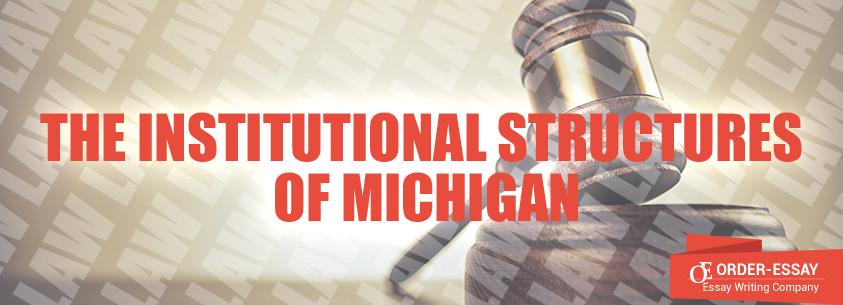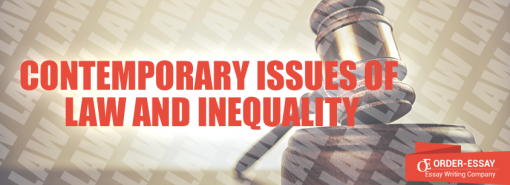
Michigan State constitutes three branches of government, namely the executive branch, the legislative branch and the judicial branch. On the one hand, the executive branch is compounded of the Governor of Michigan and three other independently elected officers; on the other hand, the legislative branch constitutes the House of Representatives, the Senate, and the judicial branch which comprises one court of justice (Fino, 2011, p. 23). The electorate has direct participation through initiative, recall, ratification and referendum. This paper will discuss the executive branches and legislative branches.
The Michigan legislature is a bipartisan institution which comprises the Senate, which forms the upper house. Talking about the House of Representatives, it constitutes the lower house. The Michigan Constitution was adopted in 1963 (Little & Ogle, 2006, p. 17). Article IV of the constitution states the role, powers and the structure of the legislature. In fact, the legislature holds their meetings in the Capitol building in Lansing. The chamber is situated in the south wing of the building.
The upper house of the legislature has 38 members who are elected on a partisan basis every four years. The election of senate members runs concurrently with the election of the Governor of Michigan. Following the recent creation of districts in 2002, the members are appointed from single-member election districts; this ranges from 212,400 to 263,500 residents. The senator’s term commence at noon on January 1and runs for a period of four years. The members appoint other officers and set the rules of procedure when a new session begins. The Lieutenant Governor acts as the president; thus, he can only cast a vote in the event of a tie. In 2011, the majority share was held by Republicans who had 26 seats, whereas the Democrats held 12 seats.
The lower house of the legislature comprises 110 members who are elected on a partisan basis every two years. Apparently, their election runs concurrently with the election of Representatives in U.S. Congress (Fino, 2011, p. 27). Following the recent creation of districts in 2012, the members are elected from single-member election districts which range from 77,000 to 91,000. The term of the representatives starts on January 1 at midday and runs for two years. In 2012, the Republicans formed the majority of seats with 59 members, and the Democrats held 50 seats. In fact, there is one independent member. The House of Representatives appoints their own Speaker of the House and its other officers. They also adopt their rules of procedure at the commencement of a new legislative session.
A new session commences when the members of each house meet on the second Wednesday of January every year at noon. During the week, the House sessions are held every Tuesdays, Wednesdays and Thursdays at midday. The Senate sessions normally start at 10 a.m. on Tuesdays, Wednesdays, and Thursdays. A typical session of the legislature lasts throughout the year. However, in late December, there are a number of periods of recess and adjournments. Each session can continue until the members reach an agreement to adjourn sine die (Little & Ogle, 2006, p. 21). However, this triggers interim recesses. Hereby, the Governor can initiate special sessions.
In 1992, the electors of the state adopted a constitution amendment which was effected in 1993. The amendment provided a limit to the term one is likely to serve as a member of the legislature. Initially, many of the seats would be held by one individual for decades. The reason was to insure that there was a considerable turnover within the legislature. According to this amendment, an individual may not be elected to the senate office more than twice or to the House of Representatives office more than thrice.
The Michigan Executive branch comprises the Governor, the Secretary of State, Lieutenant Governor, and the Attorney General. The candidates for the governor’s office are elected on August primary election, whereas the Secretary of State and the Attorney General are nominated at the regular year between presidential elections. The elected executives can only serve up to a maximum two terms. They convene at the Grand Tower in Lansing. The Michigan Constitution that was amended in 1963 states that the executive power of the state is vested in the Governor (Fino, 2011, p. 57). Apparently, that power can be exercised formally by the executive order. Once the Governor signs the order, it is filed with the Secretary of State. The Secretary of State seals the orders which are retained by the Office of the Great Seal. Acting as the state managers, the Governors are charged with the responsibility for implementing state laws and controlling the operations of the state executive branch. Thus, their responsibilities are to sign or veto laws that include the line-item veto that has been passed by the legislature. The veto power of the Governor is the power to prevent the enactment of laws passed by the legislature either permanently or temporarily.
The Governor has the power to appoint judges. However, this requires authorization by the electorate. Moreover, he can appoint members of boards and commission. The Governor also reorganizes state executive government agencies and departments. Having been given the go-ahead of the senate, the Governor oversees most department heads. Furthermore, he proposes the state budget. Additionally, he gives the annual speech at the State of the State Address. He can grant pardons for all crimes with the exception of cases that deal with the impeachment by the legislature. Finally, he can sue other executives of the government for the denial of the law, and he commands the state military.
The term limits for Governors are four years. The State of Michigan provides for the impeachment of the Governor. The impeachment process commences with the lower body of the legislature and the trial is done by the upper body. The impeachment process requires a majority of members, while the conviction requires two-thirds or other special majority (Code of Federal Regulations, 2011). When the Governor is impeached, the Lieutenant Governor transforms into the acting Governor. The Lieutenant Governor is the second ranking official in the Michigan State. Both the Governor and Lieutenant Governor are appointed to serve for a period of four years. Talking about the Lieutenant Governor, they have three main duties. Thus, they are the acting Governor while the Governor is away. Moreover, they can serve as a Governor when the acting Governor cannot serve due to death, illness or incapacitation. Finally, they chair the Michigan State.
The Secretary is the third official in ranking in the State of Michigan. In some cases where the Governor and Lieutenant Governor are both absent and their seats have been declared vacant, the Secretary of State can serve as a Governor. They are responsible for elections and oversee the registration of vehicles and the licensing of drivers. The officeholder also controls the notary’s public. Finally, they are the custodian of the Great Seal of Michigan.
The Attorney General of Michigan acts as the fourth-ranking official in the State of Michigan. Following the adoption of the Michigan Constitution that took place in 1963, the Attorney General serves a term of four years. The limit is two terms which span eight possible years of service. The office holder can also extend to ten possible years of service which translates to two full consecutive terms and less than half of one term acting as a replacement. The Attorney General acts as a chief law enforcement officer. They are also the lawyer of the State of Michigan. When public legal issues arise, they offer opinions on legal matters. Thus, they provide legal counsel and legal representation in court actions. They can intervene in a lawsuit to safeguard the interests of the individuals of the State of Michigan (Michigan State Law Review, 2003, p. 31). Finally, the Attorney General also possesses investigative powers such as the power to investigate election fraud allegations. Moreover, they have the power to investigate other public officials.



The balance of power in the state seems to favor the Governor over the legislature. The reason is that the Governor is accountable for the final approval of state budgets and appropriations. Governors are charged with the responsibility to develop the annual and bi-annual budgets. They submit the budgets to the legislature for review and approval. The Governor also has a nullification power which is referred to as line-item veto power used for the elimination of appropriations to which they object. In fact, this enables the Governor and their staff to have the upper hand in controlling the management of state resources.
The Governor has the mandate to issue executive orders. They can issue an order to initiate emergency powers when there are natural disasters and crises. The order can be issued to create advisory and coordinate the investigation committees (Krutz & Peake, 2009, p. 34). Finally, the orders can be issued to address management and administrative problems which include regulatory reform.
Get a Price Quote
Governors are in charge of enactment of state legislation. In most cases, they use State of the State Messages to define their legislative platforms. They tend to prepare specific legislative proposals to be used on their behalf. In addition, most state departments and agencies may pursue legislative initiatives only after the Governor has given their approval. The Governors and other executive branch leaders also seek to mobilize the public in favor of or opposition to some specific legislative proposals. The Michigan State Governor has the power to veto the entire legislative measures (Krutz & Peake, 2009, p. 29). They interact with their legislatures to insure that the priorities, goals, and accomplishments are presented accurately. The Governor is the overseer of the legislative activities. Finally, Governors act as party leaders; therefore, they may enlist one’s support for legislative initiatives to influence the progress of legislation. Thus, this translates to the Governors exerting more power than legislature branch of government.








